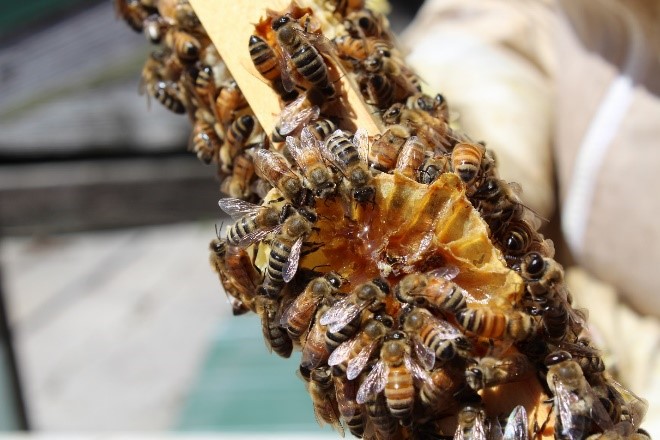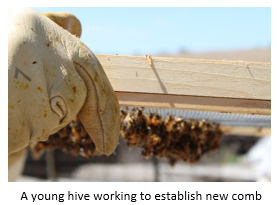You don’t need to be an Iowa native to know our land is draped with millions of acres of crops. Roughly 30 million acres in Iowa are allocated for crop production. Being one of the top corn producers in the nation has many positive effects on our economy. In order to maintain successful production, we rely on the help of pollinators like honeybees.
Pollinator populations have been in decline over the past decade, and honeybees are most commonly named. The leading cause; Colony Collapse Disorder (CCD). With no one-specific cause for CCD, there were, however, accelerated population declines when the use of neonicotinoids and other insecticides became prevalent in the 1990s.
 Neonicotinoids are a neuro-active insecticide including: Imidacloprid, thiacloprid, thiamethoxan, acetamiprid, clothianidin, nitenpyram, and nithiazine. These chemicals impair: memory, learning, foraging, and hive hygiene along with overall damage to the central nervous system of individual honey bees. While neonicotinoids are simply acting on their designed targets, honeybees and other pollinators can be affected if careful application practices are not employed. However, more and more conservation efforts are being used by farmers, and beekeepers, and together they are positively shifting colony trends.
Neonicotinoids are a neuro-active insecticide including: Imidacloprid, thiacloprid, thiamethoxan, acetamiprid, clothianidin, nitenpyram, and nithiazine. These chemicals impair: memory, learning, foraging, and hive hygiene along with overall damage to the central nervous system of individual honey bees. While neonicotinoids are simply acting on their designed targets, honeybees and other pollinators can be affected if careful application practices are not employed. However, more and more conservation efforts are being used by farmers, and beekeepers, and together they are positively shifting colony trends.
USDA/NASS data shows the decline of Iowa colonies from 2000 on, with a slight exception in recent years. Colonies have slowly begun to increase and, as of January 1, 2015, honeybee colonies for operations with five or more colonies totaled an estimated 12,500 colonies. One year later in 2016, operations in Iowa with five or more colonies reached an estimated 16,500 colonies. This 32 percent increase in honeybee colonies occurred in just one year, showing that awareness and smart(er) pesticide use may be just the ticket to rejuvenate both bee colonies and crop production practices.
Increasing the number of honeybee colonies is critical for successful crop production, especially food crop production. Insect-pollinated crops are estimated to make up about 1/3 of our diet. On the same token farmers have a strong need to responsibly use pesticides to ensure success in crop production. A joint effort in management practices from both farmers and beekeepers can help ensure the health and growth of both our honey bee colonies and other beneficial pollinators. Here are some “joint effort” action items that can enable crop and honey bee productivity:
- Take advantage of Conservation Reserve Programs (CRP)
- Establish hives of your own
- Planting bee-friendly plants and herbs
- Talking with local farmers to find out when they will be spraying fields. This allows beekeepers to cover hives for a few days while the treatments settle.
These insecticides are an important part to overall crop success for our farmers and by taking a few extra steps we also help can reestablish strong, healthy honeybee colonies while still cultivating successful crop production.


